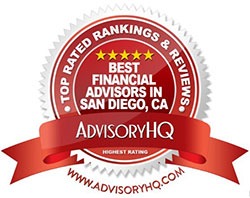Have you ever looked at an empty toolbox and wondered what should be in there? What are the fundamental tools that a craftsman absolutely must have? For financial planners, two of the most important tools are a person’s balance sheet and cash flow statement. A quick review of these two documents can tell a lot about someone’s finances. For people who feel overwhelmed by how fast money comes and goes, taking some time to prepare these two documents is the first big step to gaining control of your finances. For us, they are the first step to clarity.
The easiest place to begin is your balance sheet. It doesn’t have to be complicated; any piece of paper will do. On the left side of the page, list each of your assets. In our practice we start with deposit accounts like savings and checking accounts, then move to liquid investments like brokerage, mutual fund, and retirement accounts. Then we list illiquid assets like your home, autos, and any business, investment properties or collectibles you might own. Once you’ve listed each item, put a value next to it from your most recent account statement. Your home’s value can be found on websites like Zillow or Trulia. If you don’t have a value for something (like a car or your business), just put $1 there as a placeholder. Total all of these to find your Total Assets.
The next step is to list your liabilities on the right side of the paper. Start by listing your credit cards, then any other loans (like auto, furniture, braces for the kids, etc.), student loans and finally any mortgage debt on your home or rental properties. If you have a business loan, you may want to list that here, too, especially if you’ve shown a value for your business. Next, list the amount owed for each of these items. If you pay your credit cards off each month, just put a $1. If you carry a balance on a credit card, be sure to list the total amount owed here. Add all of these up to find your Total Liabilities.
GUIDES
The Essential Guide to Retirement Planning
A 4-part series that answers key questions about building your plan, positioning your investments, and more.

Net Worth is equal to Total Assets minus Total Liabilities. Most young people won’t have much in the way of assets (and the number might even be negative) but that’s perfectly normal. Your balance sheet will be the foundation for estate, retirement and insurance planning because it shows what assets need protection. It’s also at the heart of many financial goals.
Next up is the Cash Flow Statement. Start by listing all the money coming in, and the source. Start with your income from work, then add any income from investments, social security, pensions, trusts, etc. Add them up to find your total income. Next, list your expenses. Start with estimates and round numbers (nearest $10 for monthly expenses). The amount of detail here is up to you, but the more honest (and detailed) you are in listing your expenses, the more useful this tool will be. Add these up to find your total expenses.
Net Cash Flow is equal to your total income minus total expenses. If the number is negative, it means you’re spending more than you’re bringing in (or you missed an income source). A positive number means you have money left over to put towards your goals.
ACCREDITATIONS & AWARDS
We’re proud to have been honored by some of the organizations in our industry.

To build your net worth, either increase the value of your assets (by adding excess cash flow to savings or investments) and/or decrease your liabilities (pay off debts). Paying off your debts first can significantly improve your cash flow. The cash flow statement tells you how much you have available to do this and where your money is being spent. Knowing what you’re spending money on allows you to make changes if needed.
These are just two of the tools we use to bring clarity to our clients’ financial picture, but they are a great first step toward achieving your goals. If you’d like to learn more about our wealth management service, and how our proven process brings confidence, clarity and direction to your finances, please contact us.

